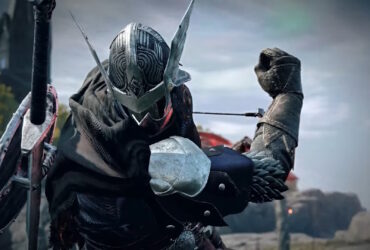Nintendo’s recent announcement of GameShare and new virtual game card features for the upcoming Nintendo Switch 2 positions the company surprisingly ahead in digital game accessibility. GameShare is an inarguable strategic move that significantly simplifies game access, something that PlayStation and Xbox currently lack, and even Steam struggles to streamline effectively while dominating in this regard, up until now.
The new features let players share compatible games even if only one person owns the title, which addresses one of gaming’s persistent barriers. Although the system has its limitations for now, including GameChat only being available for Nintendo Switch 2 and GameShare sharing not being available on Nintendo Switch, it’s a start. Plus, games, including but not limited to Super Mario Odyssey and Super Mario 3D World + Bowser’s Fury, will be immediately compatible, and that will have users generating traction and value from GameShare and GameChat from the get-go.
1:31

Related
Nintendo Could Change the Game with the Switch 2 Joy-Cons’ Mouse Features
Nintendo started 2025 with the highly anticipated reveal of the Switch 2, confirming long-rumored upgrades while maintaining the familiar hybrid design. One of the biggest innovations is the new Joy-Cons, which seem to feature mouse-like functionality. While it’s unclear how widely this will be implemented, it has exciting potential for franchises like WarioWare and Mario Maker, where precise controls could enhance gameplay and level creation.
Nintendo Is Doubling Down on Digital Game Accessibility With Switch 2
Central to Nintendo GameShare’s appeal is its ability to allow users to share games locally with any Nintendo Switch or Nintendo Switch 2 console, even if recipients don’t personally own the game. The whole process will be as easy as utilizing a local wireless connection for an uncomplicated game-sharing experience. This contrasts starkly with current digital rights management approaches, which typically restrict or heavily complicate this seemingly simple process.
What further strengthens Nintendo’s newest game-accessibility strategy is GameShare’s online counterpart, GameChat, which too, will allow Nintendo Switch 2 owners to share compatible games with their friends on the internet, even if only one of them owns the copy. It’s also clear that Nintendo plans on smartly incentivizing user engagement that’s going to rush through the door because of this, so it has also announced GameChat will be available free of charge until March 31, 2026, after which it’ll rely on a Nintendo Switch Online subscription.
Virtual Game Cards Aren’t Making It Any Complex Either
The new Nintendo virtual game card feature will now let players treat digital games like physical ones. If there are two systems linked to the same Nintendo Account, players will now be able to simply “eject” a game from one and load it onto the other without a need for reinstalling or re-downloading. Virtual game cards will also allow players to lend games to people in one’s Nintendo family group for up to 14 days. When the game is returned, the borrower will be able to keep their data safe, making it easy to pick up where they left off if they borrow it again or decide to buy it later.
Why Nintendo’s GameShare System Could Be A Challenge for Other Consoles
Nintendo’s innovative approach could pressure Sony and Microsoft to reconsider their digital accessibility policies. While Xbox and PlayStation have systems allowing limited digital sharing through methods such as account sharing or primary console setups, these methods are convoluted, restrictive, and sometimes discourage casual use due to security or policy concerns.
Nintendo’s straightforward approach now offers instantaneous game sharing without complicated setups or lingering access concerns, and that highlights deficiencies in competitor systems. For PC gaming platforms like Steam or EA App, digital sharing mechanisms exist but carry significant complexity and limitations.
Steam Lets Players Share Games, But It’s Complex
Steam’s Family Sharing technically allows users to lend their digital libraries to friends or family members, but it involves multiple verification steps, device authorizations, and cumbersome restrictions on simultaneous access. Nintendo’s new solution, by comparison, appears streamlined, consumer-friendly, and genuinely practical for both spontaneous and planned gaming sessions.
Accessibility Complications Sometimes Extend Beyond Just Game-Sharing
If a player has already installed Apex Legends, for instance, via EA’s platform and later attempts to integrate it with Steam, the process involves frustratingly redundant downloads or complicated manual file transfers. Conversely, shifting a Steam-based installation over to EA App’s launcher is equally cumbersome. This reflects significant multi-angle digital accessibility problems that Nintendo neatly avoids.
Other platforms and consoles may need a solution for this sooner or later. Nintendo’s simplified, inclusive, and platform-unified game-sharing approach, therefore, marks a refreshing and necessary direction in digital game accessibility and is challenging the industry to follow suit or risk falling behind. At the same time, other consoles’ and platforms’ wide libraries of games still remain an edge for them, so it’s not like subpar digital accessibility, in comparison to Nintendo, is going to be an immediate deal-breaker. It’s just that, eventually, other platforms and consoles will have to follow suit because a new standard is now in motion.












Leave a Reply